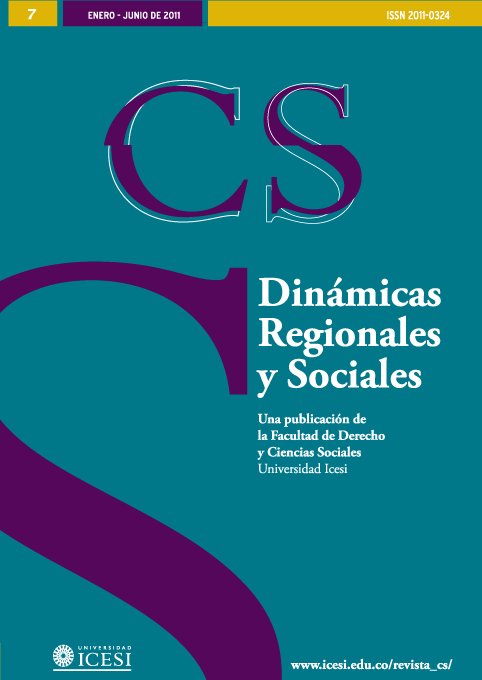Development in 3D: The Keys on the Differences of the Quality of Life in the Regions
DOI:
https://doi.org/10.18046/recs.i7.1042Keywords:
Spatial Econometrics, Quality of life, Clusters, Economic integrationAbstract
The data for Colombia suggests that in municipalities still persist deep differences in thelevels and space distribution of quality of life index (ICV). This article explores the main
factors in the explanation of these differences according with the approach of the New
Economic Geography (NEG ). This study focuses on the regions with the largest precence
of black population and uses information available for 1059 municipalities of Colombia’s
population Census of 2005. Using univariant and multivariants spatial econometric
techniques, this study identifies the presence of clusters of high and low quality of life.
Results show that distance, the rate of urbanization and the concentration level of the black
population allow to explain the spatial differences in the quality of life conditions. The
estimation of the spatial econometrics models suggest than the rate of urbanization (proxy
of the economic market size) affects positively the quality of life level (ICV). Additionally
the spatial distribution of the black population and the distance to the main markets
indicate a negative and statistically significant relation with the ICV.
Downloads
Downloads
Published
Issue
Section
License
© Reserved Copyright
Material in this publication may be reproduced without authorization, provided the title, author and institutional source is acknowledged.
The content published in Revista CS is distributed under the Creative Commons BY-NC 4.0 Attribution/Recognition-NonCommercial 4.0 International license.
You are free to:
Share — copy and redistribute the material in any medium or format.
Adapt — remix, transform, and build upon the material.
Under the following terms:
Attribution — You must give appropriate credit , provide a link to the license, and indicate if changes were made . You may do so in any reasonable manner, but not in any way that suggests the licensor endorses you or your use.
NonCommercial — You may not use the material for commercial purposes.












